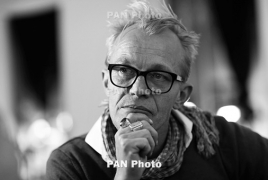
Divided cities
Everything started with this fascination about cities that were divided either by politics, religion, or war. I lived in Berlin for some time and thought it was exciting to be a part of Europe, disjoined on religious grounds. And I decided to go to Belfast, where dramatic events were happening (ethno-nationalist conflict (The Troubles) was in full swing in Northern Ireland, due to the dispute over the regional status between the British authorities and local right-wing catholic and national organizations – editor’s note). I witnessed too much violence and massacre.
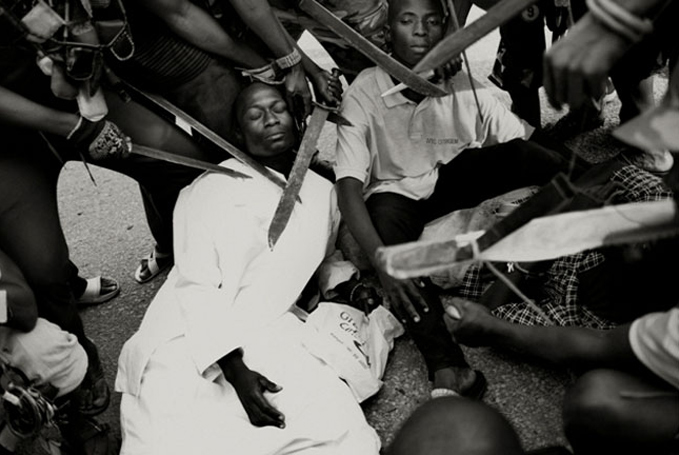
The picture was taken by Jan Grarup in the Central African Republic, home to one of the world's most important but forgotten ethnic conflicts. The picture features a militia group known as anti-Balaka who demonstrate what they will do with the Muslims if they get their hands on them.
The poor and the rich
Even in the darkest place there is a lot of humanity, and maybe what is more interesting for me is how people are grouping and surviving in wars, or in situations when you have atrocities going on, like a genocide. I have met more humanity and empathy in the poorest countries than I have in European countries, which is interesting. It seems the more people have, the less they care about others. And that’s a really interesting phenomenon. Looking back at the history, I think the Western world has a very big responsibility in terms of how the African colonies are developing. I do not hail the refugees' immigration, but now the crisis is so big that we have to do something about it.
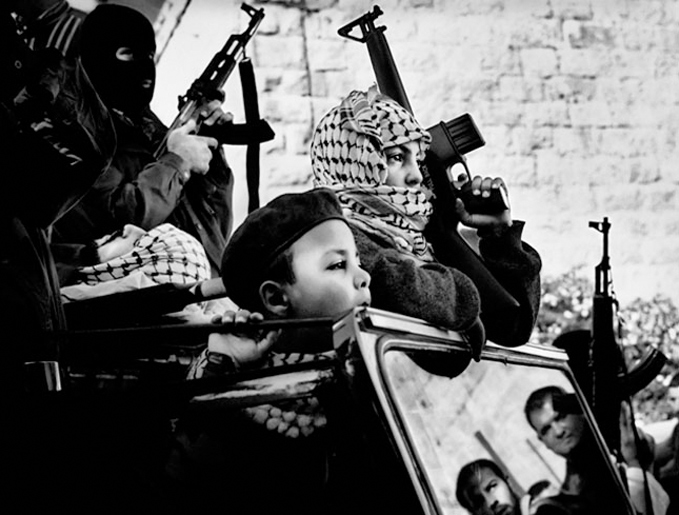
A photo of two Palestinian boys dressed in military garb for the funeral procession for a Fatah martyr, taken during the so-called second intifada, a period of escalation of violence between Palestine and Israel, which lasted from 2000 to 2005. The photo was taken in Ramallah in the West Bank.
Somalia
The only reason I worked with security in Somalia is that I would not last one hour on my own. That was a religious conflict, organized by some extremist Muslim terrorist groups. And on the other side you have these very religious groups that want to create a caliphate or some Islamic State. But between these fractions you have the huge population trying to survive, and those are the people I am focusing on.
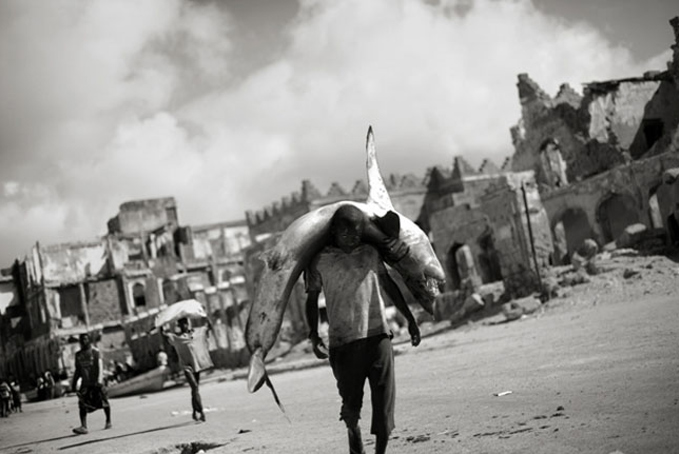
2013. A fisherman in Mogadishu, Somalia, dragging his day's catch, a 120-kilo shark. Fishing is one of the few professions that flourish in the civil war-torn country, with piracy making competition virtually nonexistent.
My profession
I often work alone, and I worked alone in Rwanda. At some point things got dangerous, and I moved. What I do is very dangerous, but I travel alone: it’s never interesting to travel in a group, because people are just doing the same. I speak four languages, so that helps me a bit. But I also work with translators and the local people who can be helpful in terms of understanding. If I were invited to work here, I would be able to work at the streets, but would never be able to get into the depth of Yerevan. You always need someone local to help you understand the stories. But a good photojournalist for me is a curious one. You have to be curious of other people’s lives, be interested in driving somewhere, getting to know the places and the people of that country, the underground life and that of the middle class. I don’t just want to go somewhere and look at the surface: I want to go into the story.
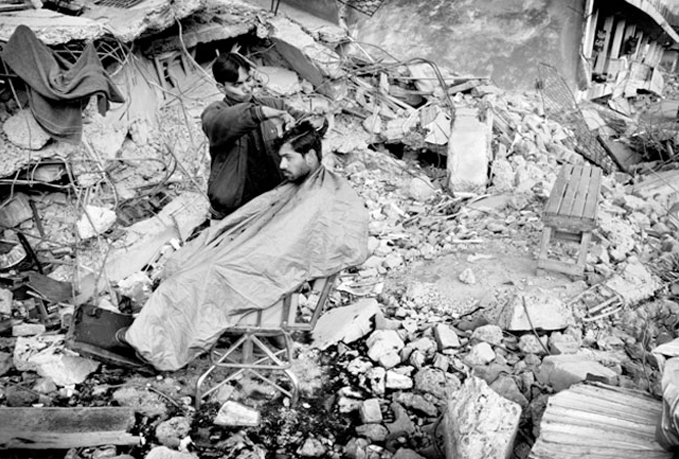
The town of Balakot in Pakistani part of Kashmir Province was destroyed by earthquake on October 8, 2005. Three days later, this hairdresser is servicing the city's men on top of the quake ruins.
The Genocide
Well, for me genocide is when a certain group is trying to exterminate another group, whether that is in ethnic cleansing or some orchestrated attack, like the one here or in Rwanda. The world and the genocide
When 1 million Jews were killed in Germany, it was genocide, and when 100.000 Tutsi people were killed in Rwanda, it was genocide too, because neither war nor two groups fighting each other lay in the anatomy of the conflicts. It’s one group deciding to exterminate another group not because of power, but because of their religion, their belief, their faith, the way they look, or whatever.
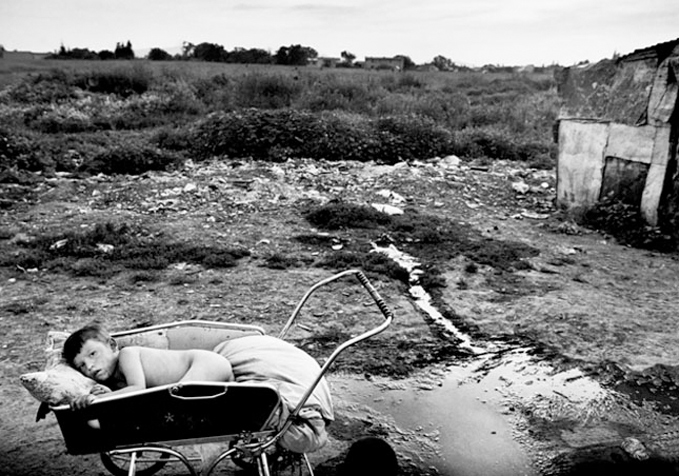
In 2004, Slovakia joined the EU. Jan Grarup took the picture of a neglected child as part of the documentation of the Roma and other minority groups disenfranchised during the EU enlargement.
Genocide and I
I have met a lot of people around the world, whom I have learnt many things from. It can be very difficult to show humanism or empathy if you are traveling in such areas, but those constitute the only difference between human beings and animals. I have witnessed the worst things that people can do to each other, but I have also lived situations when people had nothing to give and share, but still invited me into their lives. I am privileged, but this is a very hard life. And if you were not affected by it, you are a very cruel person.
Restrictions
I think all pictures should be taken, but not all of them should be shown. I am not usually in a situation to think what to photograph and what not to. And there is one more aspect: from a historical point of view, pictures become important many years later. If the horrible pictures of WWII were not taken, it would be a disaster, as today they serve a very important, historic purpose. One can only wish that there were more pictures taken from the Armenian Genocide for us to have the photographic documentation of what happened.
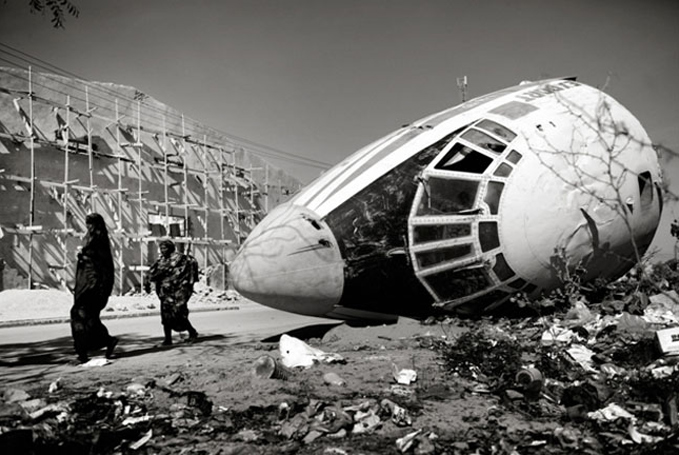
2013 Mogadishu, Somalia. A Russian cargo jet has been shot down by Al-Shabaab militias of the Somali capital.
I think it’s up to an individual photographer to decide what pictures they should show and how. I have seen many photographs of Central Africa, which look like mine. But mine are more aesthetic and make people look at them, while others are more straightforward and depict blood and violence. If the picture is so cruel you can’t even look at it, than it serves no purpose. Whereas I want my pictures to have a long life.

